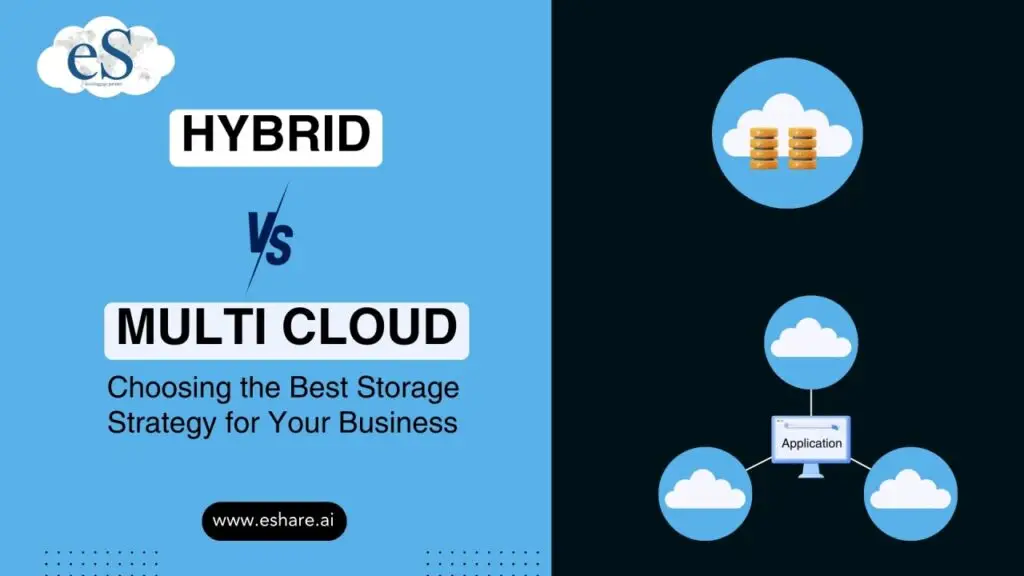Cloud computing is a rapidly expanding domain. End-user spending on public cloud services is expected to reach $600 billion in 2024, growing at approximately 20% annually. Cloud computing allows businesses to access computing services, such as servers, software, and intelligence, via the internet from any location.


Gowtham Chand M
Content Writer
Cloud deployment models:
Cloud computing is a technology that offers a range of deployment models, such as software as a service (SaaS), platform as a service (PaaS), and infrastructure as a service (IaaS). It finds applications in various industries. To leverage the benefits of the cloud, businesses must know the pros and cons of different deployment models.
Hybrid Cloud:
A private cloud serves a single organization, while a public cloud is shared among multiple organizations. Hybrid cloud architecture integrates one or more public and private clouds, offering customization of IT infrastructure and tailored cloud deployments to meet unique business needs.
Multi-cloud:
In contrast, multi-cloud computing involves using multiple public clouds for various purposes, such as reserving one for business files, another for databases, and another for applications. Different cloud service providers may manage these clouds and operate independently.
Differences Between Hybrid Cloud and Multi-Cloud:
A hybrid cloud infrastructure is created by combining public and private clouds, allowing customization. Conversely, multi-cloud blends multiple public clouds for diverse purposes but operates in isolation without interaction with other cloud types.
Hybrid Cloud and Multi-Cloud: Not Mutually Exclusive
Hybrid cloud and multi-cloud are not mutually exclusive categories. A hybrid cloud can comprise multiple public clouds, thus making it a multi-cloud implementation. On the other hand, a multi-cloud architecture may also include on-premises data centres or supplementary private clouds, which makes it a hybrid cloud.
Factors to Consider When Choosing a Cloud Strategy:
- Cloud-First vs. Multi-Cloud: Decide between moving all data and applications to the cloud at once (cloud-first) or adopting a gradual multi-cloud approach.
- Migration Effort, Cost, and Duration: Consider the time and cost of migrating operations to the cloud.
- Workload Audit: Monitor workload and bandwidth requirements over time to establish a baseline for choosing the right cloud deployment strategy.
- Training Needs: Assess the technical expertise of the team and potential training requirements for implementing multi-cloud or hybrid cloud solutions.
- Security: Examine security arrangements offered by different service providers to align with enterprise expectations.
- Real-World Examples of Hybrid and Multi-Cloud Use: High-Performance Needs: Cloud gaming, financial applications, and real-time transaction processing benefit from dedicated high-performance clouds.
- High-Security Needs: Confidential data storage may involve a private cloud for sensitive information and public clouds for less critical data.
- Database Hosting: Separate the storage of large databases from other applications to balance bandwidth use.
- Load-Balancing: Deploy additional servers from multiple clouds during peak usage for cost-effective load balancing.
- Optimizing Facilities: Choose different cloud providers for storage capacity and performance to optimize facilities.
Choosing Between Hybrid Cloud and Multi-Cloud:
Both deployment models offer reliability and flexibility, but no one-size-fits-all solution exists. Businesses must consider application performance, data governance, regulations, and latency to determine the most suitable cloud architecture.
- How to Streamline Media Collaboration with the File Sharing Platforms - June 25, 2025
- The Future of Data Security: Advanced Encryption Algorithms - June 11, 2025
- 7 Ways eShare.ai Individual Plan Solves Common Freelancer Challenges - June 5, 2025







